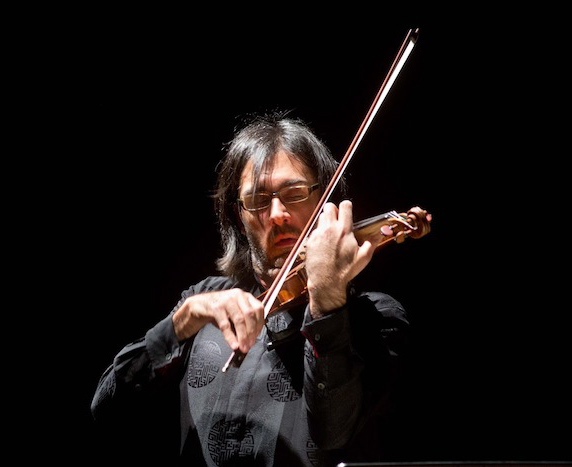Brahms provides the highlight in Kavakos’ mixed Houston Symphony program

Leonid Kavakos performed as soloist and conductor with the Houston Symphony Orchestra Sunday afternoon.
“Double Threat – Kavakos Plays & Conducts” was the title of the Houston Symphony program performed on Sunday afternoon.
As a violinist, Leonidas Kavakos has few equals, and he is among the most elite soloists performing today. His conducting skills, however, would not likely be a threat to most of the outstanding conductors of today. Still, his passion for the music was clear at Sunday’s concert.
The program began with Bach’s Violin Concerto in A minor, with Kavakos as soloist, leading a reduced, Baroque-sized orchestra of strings and harpsichord. The first movement was slightly unbalanced, with the tuttis sometimes covering the solo violin. Kavakos’ bow-arm produced a silky and varied tone without any hard articulations. That style was not uniform in the orchestra, producing an interpretation that was neither polished nor historically informed.
Kavakos began the second movement squarely facing the violins, leaving the cellos to place the tempo-establishing note on their own. Fortunately, the principal strings assisted in maintaining clean ensemble. While the slow movement could have provided Kavakos several opportunities to ornament the melody, most of that interest came from harpsichordist Scott Holshouser. For the third movement, a bouncy gigue, Kavakos added many virtuosic flourishes.
Kavakos returned, sans violin, to conduct a Classical-sized orchestra in Mozart’s Symphony No. 36 in C major, the Linz. He did not use a score or a baton, which here too produced mixed results. The string sections had to listen carefully to each other to stay together since the visual cues were mostly small dynamic nuances. Kavakos seemed less interested in the overall structure and form, and the result was a strangely boring interpretation. Special moments of tonal color were rare, although oboist Jonathan Fischer played several beautiful solos that provided interest. That the Houston Symphony played as well as they did is a testament to their professionalism and expertise.
The final work was Brahms’ Symphony No. 4 in E minor. If each of his four symphonies is a season, this final one would be autumn.
Here Kavakos also had no score, but now used a baton, and the difference was dramatic. Even with a much larger orchestra and a more complex score, the security and interpretation was far superior to the performances heard in the first half of the evening.
This symphony is Brahms’ most formal structurally, and it requires a passionate interpretation to illuminate the underlying emotion. This made it the perfect vehicle for Kavakos, whose physical gestures and energy complimented the music. The undulating arpeggios in the violas and cellos were sensitively shaped to support the yearning first theme. Rhythms were confident and cohesive. His cues were precise and purposeful, and he often provided needed subdivisions and beats during rests. At Kavakos’ urging, the string sound was sonorous and rich, and the second theme was played with unforced conviction by the French horns and cellos.
The second movement featured the wind section for an extended time, with the strings providing a pizzicato accompaniment. The French horns, then clarinets and bassoons provided an elegant and perfectly balanced opening, with more fine playing throughout the movement.
The scherzo was lively but controlled. Treacherous passagework in the upper strings was deftly executed, and Kavakos directed a few delayed downbeats which kept the music from diving head first into cadences.
The final movement is a passacaglia, which is a set of variations, each eight measures long, played without pause.
Here, the string sections demonstrated a wide range of colors and expression. The movement also featured a gorgeous extended flute solo by Aralee Dorough, a radiant trombone chorale, and numerous well-played woodwind solos. The French horns, led by William Vermeulen, were excellent throughout. For his part, Kavakos knew when to assist and when not to interfere.